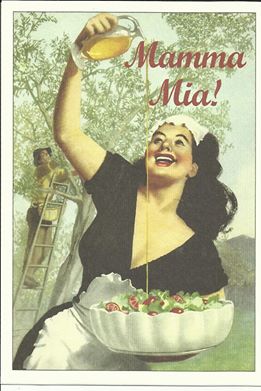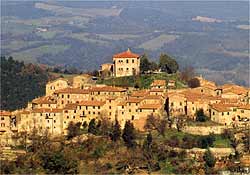David Peat, author of The Bridge Between Matter and Mind, will hold a four day seminar on synchronicity, June 12-16, 2015 at the Pari Center for New Learning in Pari, Italy, where Peat resides. The name of the seminar appropriately is The Bridge Between Matter and Mind.
We’ve corresponded in years past with David Peat, and when The Seven Secrets of Synchronicity came out, he invited us to speak at the Pari Center. We haven’t made it there yet. But maybe some of our readers will journey there next June…and, who knows, maybe we’ll see you there.
Here is how David describes synchronicity:
Synchronicities are those mysterious and inexplicable coincidences that occasionally erupt in one’s life. At times we may feel that those around us are confined to a narrow world of logic and physical law, a world that admits no hint of mystery. This can give rise to a feeling of isolation within an indifferent universe and in an increasing complex society whose members are reduced to ciphers. Synchronicities, by contrast, open a doorway into a very different world: a world that also has resonances with the deep insights that have been revealed by the new sciences.
True synchronicities are more than mere chance occurrences. They are characterized by a sense of meaning and numinousness. They provide a bridge between inner and outer worlds, between our private thoughts and external, objective realities. Within a synchronicity, patterns of external events mirror an inner experience; likewise dreams and fantasies may seem to flood over into the external world. To distinguish synchronicities from mere chance occurrences Carl Jung stressed that they must always involve “meaningful coincidence” that lie beyond any explanation involving causal links and connections. They reveal to us an underlying world of patterns, forms and connections that transcend any division between the mental and the material.
Of course, attending this seminar is also about a trip to Italy, unless that’s where you live. Pari sounds like a very interesting place to visit.
Here’s from the Pari Center website:
The medieval village of Pari, located some 25 km south of Siena is a particularly appropriate center from which to consider the future. The village is located on a hill top and surrounded by magnificent views of the heavily wooded Tuscan countryside. The surrounding area is given over to olive groves and grape vines and small-scale farming. In winter wild boar are hunted in these woods.
The surrounding area has been occupied for well over 2000 years. The Etruscans certainly made use of the curative properties of the sulfur hot spring located below the village. In addition to burial areas close to Pari the remains of a major Etruscan town can be visited at Roselle some 40 km away.
One thousand years ago Pari had become a walled town of several hundred persons grouped around the central castle, the residence of the Counts of Ardengheschi. By the 14th century the region had come under the government of the Sienese.
Until the 1950s life in Pari had continued unchanged over the centuries. Moreover it was totally self-sufficient for its food, heat, furniture, shoes and clothing. Wool, for example, was made from the fleece of the local sheep and a form of very durable linen was made from the local ginestra plant. Mulberry trees surrounding the village attest to the use of silk. Very little money circulated in the village and its economy was based on a system of exchange and barter for goods and services. What little money did enter the village came from the sale of its wine and, later, though the contraband smuggling of tobacco and salt (for preserving meat).
Here is how David describes Pari today:










Here is an interesting pod-cast where the boys from “Always Record” talk with
F. David Peat –
11.13.14 Episode 101: A Flickering Reality (with F. David Peat)
“In this special visit from F. David Peat, we learn about his years working with David Bohm, Room 137, Carl Jung, Wolfgang Pauli, Dialogue Groups, Archetypes, and the Science behind Synchronicity.
This conversation was recorded on October 30th 2014.”
https://thesyncbook.com/alwaysrecord
Thanks for the link! I love Peat’s take on synchronicity.
Sounds and looks magnificent.
Lovely. An oasis to the arts and more, preserved and now beginning to spread its wings. I think you should spend the whole month of June there.
What fun that would be!
It would be fabulous to attend this workshop!
You lucky Devils you, I would love to attend that!!!